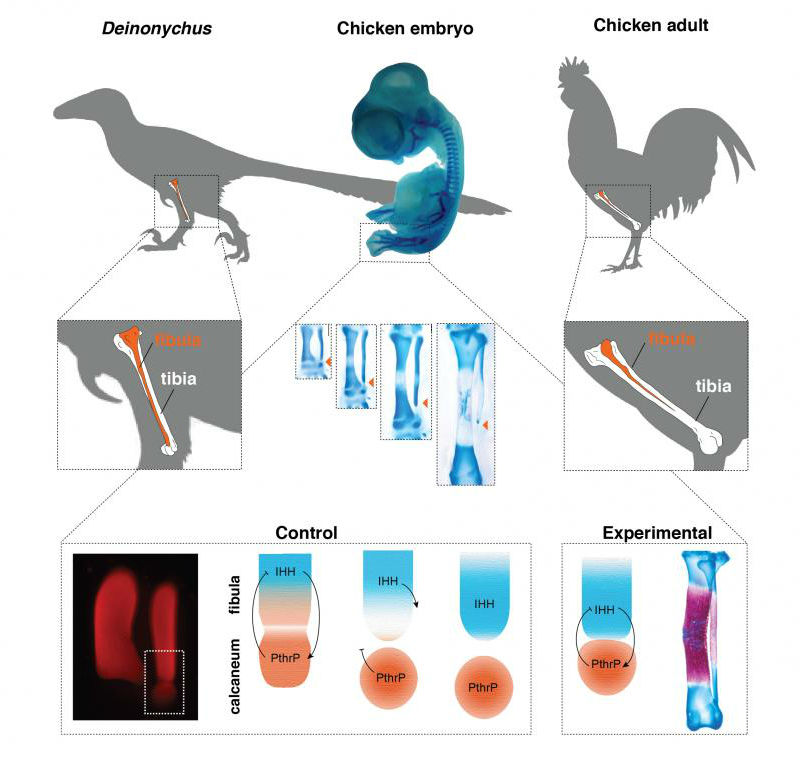In a ‘reverse evolution’ experiment, the scientists at the Universidad de Chile, headed by Joâo Botelho, have modified chicken embryos so that they develop tubular, dinosaur-like fibulas on their lower legs – one of the two long, spine-like bones, a trait which was present in their ancestors, the dinosaurs. “Any one that has eaten roasted chicken can account for the presence in the drumstick (lower leg) of a long, spine-like bone,” the researchers wrote in a press release. “This is actually the fibula, one of the two long bones of the lower leg (the outer one). In dinosaurs, which are the ancestors of birds, this bone is tube-shaped and reaches all the way down to the ankle.”
The long one is the tibia and that little one on the side is the fibula. The fibula is the outer bone in the lower leg, which has evolved in birds to be shorter than its neighbour, the tibia, and no longer connects to the ankle. The scientists explained that they wanted to how this transition from a long, tubular fibula in dinosaurs to a short, splinter-like fibula in birds actually came to be. They found that when a maturation gene in chickens called ‘Indian Hedgehog’ was inhibited, it resulted in chickens that kept a tubular fibula as long as the tibia and connected to the ankle, just like a dinosaur. However, the team also identified that as regular bone development sees cell division, it halts growth in the shaft long before the ends stop growing. But, in modern chickens, the growth of the fibula halts first at the ends. This means the fibulae of modern chickens are actively blocked from reaching the lengths of their ancient relatives’ bones. Researchers say the findings are consistent with evolutionary patterns demonstrated in fossil records. This isn’t the first time Botelho has brought out dinosaur traits in chickens. In the past, he had managed to undo the evolution of the backward-facing perching toe of birds, using gene modification to produce birds with a non-twisted, non-opposed toe, also just like dinosaurs had — and another lab at Yale built a chicken with a dinosaur-like snout by changing gene expression in chicken embryos. The scientists, who published their findings last week in the journal Evolution, said that studies like theirs that they aren’t trying to produce dinosaurs for commercial or non-scientific purposes, as happened in the film Jurassic Park. “The experiments are focused on single traits, to test specific hypotheses,” says Alexander Vargas, in whose lab Botelho made the chickens. “Not only do we know a great deal about bird development, but also about the dinosaur-bird transition, which is well-documented by the fossil record. This leads naturally to hypotheses on the evolution of development that can be explored in the lab.”
